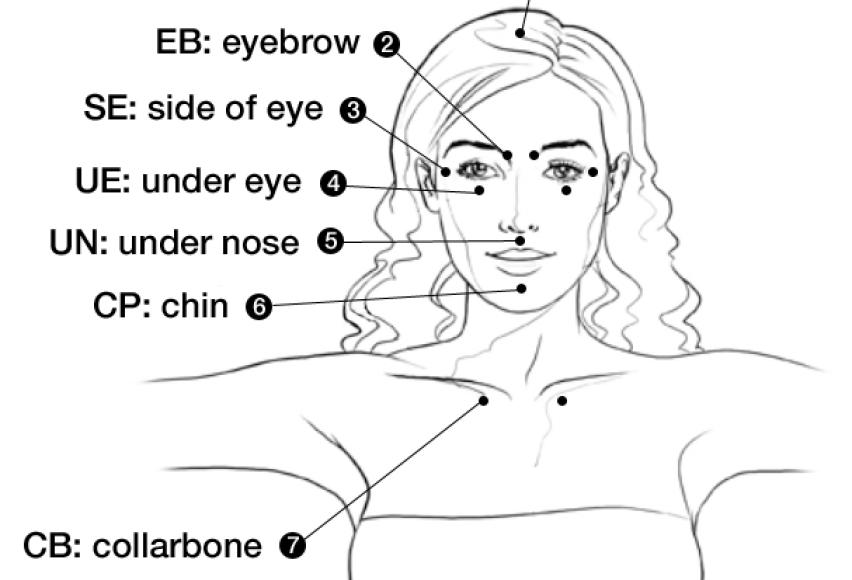What is EFT or Tapping and how can it help with skin picking?

Online test
Find out the severity of your symptoms with this free online test
We have featured videos by Dr. Tammy Fletcher from her Youtube channel Talk Therapy Channel. Dr. Fletcher has a PhD in Cognitive Studies, two Masters degrees, has published two award-winning books. A licenced marriage and family therapist Dr. Fletcher is also passionate about raising awareness and providing treatment to people sufferring from body-focused repetitive behaviors (BFRBs) and has therefore produced numerous videos on BFRBs such as compulsive skin picking and trichotillomania over the years. Her videos are always very informative. In this video Dr Fletcher shares what the therapeutic technique of Tapping is and demonstrates a sample session for people with dermatillomania. In this post we want to explore this topic more deeply, giving you a more detailed break down of what Tapping is and the sciencific theory is behind the technique.
What is Tapping?
Tapping, also known as the Emotional Freedom Technique (EFT) derives its origins from traditional Chinese medicine. Chinese medicine has developed from ancient times on the basic understanding of the body's energy referred to as "Chi". The ancient chinese discovered that stimulating of the body's 100 meridian points could influence healing. Tapping is one of the many techniques that stimulates these meridian points and energy flows to achieve healing. One of the main advantages of Tapping over other techniques such as acupuncture is that it is simple and painless and you can apply it to yourself whenever or wherever you want. It is a therapeutic technique for helping emotions, thoughts, unwanted habits, and events become "unstuck," allowing you to move forward toward the changes you would like to make. The body's meridians are used in conjunction with spoken statements which are a bit like Cognitive Therapy - initially giving a voice to negative thoughts, but evolving to the positive. It is a gentle technique which works for many people.
Does Tapping work?
Like many alternate therapies, tapping is met by skepticism by many as western medicine is largely based within a medical model of treatment. However there has been a growing research interest in the various techniques using the body's meridiam points for healing. Research done at Harvard Medical School during the last decade found that the brain’s stress and fear response could be lessened by stimulating the meridian points. Another clinial study looking at the brief group intervention using Emotional Freedom Techniques for depression in college students, found that students who received four 90-minute group sessions of EFT had had significantly less depression than the control group at post-test 3 weeks later, with a mean score in the “nondepressed” range. The study concluded that EFT is a cost-effective, and efficacious treatment for depression.
How to use Tapping?
In the video Dr Fletcher demonstrates how someone with dermatillomania might typically use the technique. At 'The Tapping Solution', author and Tapping expert Jessica Ortner explains how a basic Tapping sequence works for anxiety:
- Identify the problem you want to focus on. It can be general anxiety, or it can be a specific situation or issue which causes you to feel anxious.
- Consider the problem or situation. How do you feel about it right now? Rate the intensity level of your anxiety, with zero being the lowest level of anxiety and ten being the highest.
- Compose your set up statement. Your set up statement should acknowledge the problem you want to deal with, then follow it with an unconditional affirmation of yourself as a person.
The self talk that forms part of tapping is very similar to what you would learn in cognitive behavioral therapy. As you can see from Dr. Fletcher's video the process above can be applied to skin picking simply by changing the focus of the problem to skin picking. The statements move from a negative to positive to move yourself to a place of unconditional love and acceptance toward yourself. For example in the beginning of the demo Dr. Fletcher uses sentences like:
I feel unable to resist the urge to pick
After a series of different tapping points and sentences, she finally ends with the final tapping and repeating the sentence:
I am ready and able to try

image: The Tapping Solution
Tapping may not work for everyone, but it is simple enough and costs nothing to implement yourself. It may be that it is all you need or it may be that it is most effective when added to an existing treatment plan. The self-talk that goes with tapping perfectly complements the cognitive skills you will explore in cognitive behavioral therapy and could be a useful technique to use as a competing response to the urge to pick when exploring Habit Reversal Therapy.
Online test
Find out the severity of your symptoms with this free online test
Start your journey with SkinPick
Take control of your life and find freedom from skin picking through professional therapy and evidence-based behavioral techniques.
Start Now



